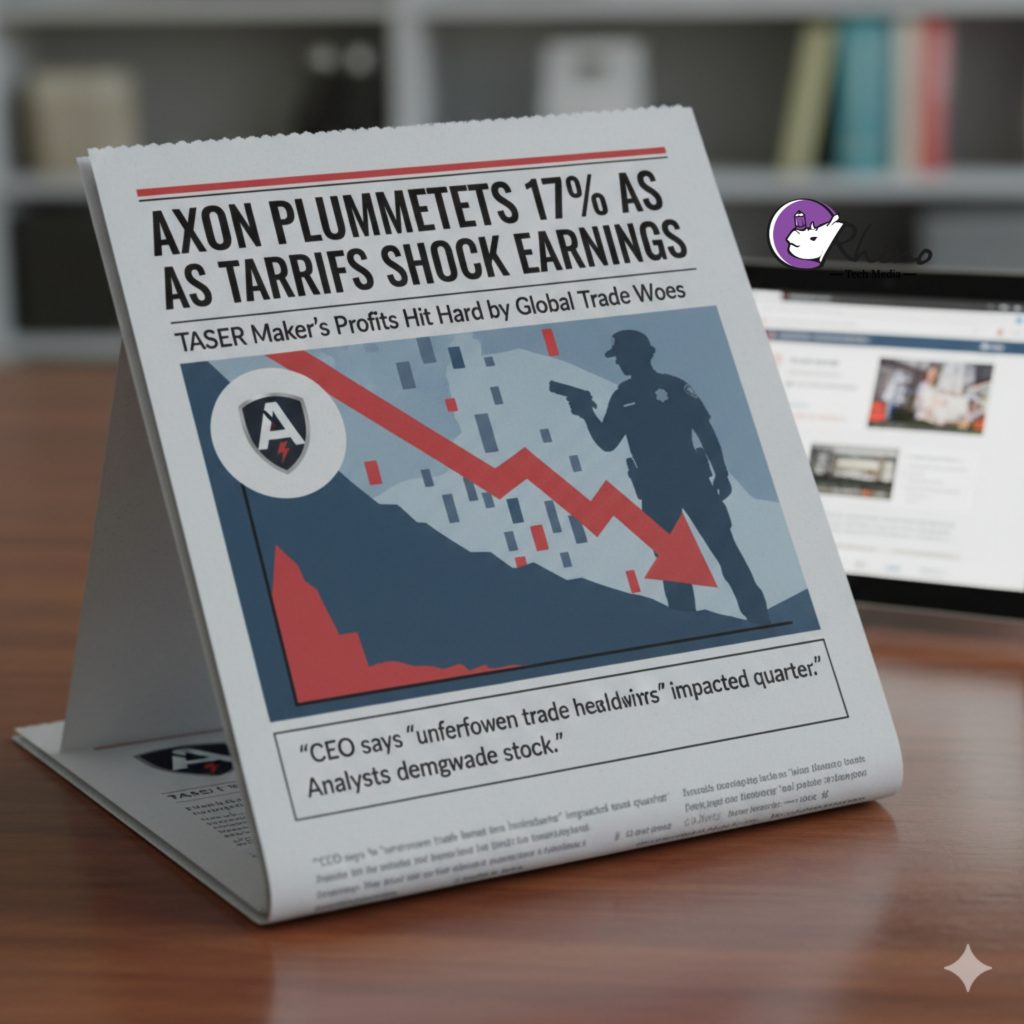Introduction
Axon Enterprise, Inc., the U.S.-based manufacturer of the well-known Taser brand, body-worn cameras, drone systems and law-enforcement / public-safety technology, recently reported its third‐quarter 2025 results. Despite strong top-line growth, the company missed market expectations on earnings per share (EPS) and flagged increasing cost pressures, particularly from U.S. tariffs that fully impacted the quarter for the first time. As a result, the share price plunged approximately 17–20% in after‐hours trading.
Financial Performance & Key Metrics
In Q3 2025, Axon delivered the following:
- Revenue rose by 31% year‐over‐year to about US$711 million, marking the company’s seventh consecutive quarter growing above 30%.
- Adjusted EPS came in at US$1.17, which fell short of analysts’ consensus (~US$1.52), representing a significant earnings miss.
- Gross margin (adjusted) declined slightly to ~62.7%, down about 50 basis points year‐over‐year, and the adjusted EBITDA margin stood at ~24.9%. The margin pressures were attributed in part to tariffs and increased investment in R&D and growth.
- Looking ahead, Axon raised its full‐year 2025 revenue guidance to approximately US$2.74 billion (up from prior range US$2.65-2.73 billion).
These numbers paint a picture of strong demand and growth, but also cost and margin headwinds.
The Tariff Headwind: What Went Wrong
The key factor behind the earnings disappointment—despite robust revenue—was the tariff impact. Some of the salient drivers:
- For the first time, Axon experienced the full‐quarter impact of U.S. tariffs on imported components and on its supply‐chain costs. The CFO of the company noted: “This was the first quarter that we had a full quarter of impact from tariffs.”
- In its earnings commentary, Axon identified the drop in margin in its Connected Devices segment (including Taser, sensors, drones) as “primarily driven by product mix and global tariffs.”
- Although software and services revenue (higher margin) grew strongly (~41% year over year), the hardware/connected devices segment (lower margin) remains more exposed to tariff and cost pressures.
- The combination of cost inflation (via tariffs + higher R&D/staffing) and mix shift meant that although the top line was strong, the bottom line (EPS) suffered. In effect, higher growth is being achieved at the expense of margin, at least temporarily.
In short: the market had priced in not only growth but margin improvement; when margin contraction hit, the shock was real.
Market Reaction & Implications
The market’s response was sharp: the share price of Axon dropped by roughly 17% (some reports up to ~20%) after the earnings release and tariff warnings.
Key implications:
- Investor sentiment shifted from “growth story + margin expansion” toward “growth story + margin pressure + macro/supply‐chain risk.”
- While demand remains strong (as seen by revenue growth and raised guidance), the cost environment and tariffs raise uncertainty around when margin improvement will return.
- Some analysts view the drop as excessive, noting that the fundamentals (growth, backlog, recurring revenue) remain intact and that the tariff cost may be manageable in the medium term.
- The company continues to invest heavily in R&D, acquisitions (e.g., emergency communications platform deals) and new product launches—this signals growth ambition but also explains elevated cost structure.
Strategic Outlook & Risks
From a forward‐looking perspective:
- Axon’s growth drivers remain strong: expansion of software & services (higher margin), increasing adoption of body cameras, drones, platform solutions, recurring revenue (ARR up ~41%).
- The company is positioning for long-term potential in public safety and enterprise security ecosystems (e.g., “Axon 911” integration of dispatch, voice, AI).
- However, key risks arise:
- Tariff and supply-chain risk: Further escalation of trade tensions or new tariffs could further compress margins.
- Cost escalation: Higher R&D/spending is good for long term but burdens short‐term profitability.
- Mix risk: Hardware segments face stiffer cost/margin headwinds versus software. A shift toward software is a positive, but the pace of transition matters.
- Valuation risk: Given high growth expectations, any deviation or delay in margin improvement or guidance could lead to further downside.
- Execution risk: Growing via acquisition and building new platforms (e.g., 911, voice) carries the usual integration and market‐adoption risks.
Conclusion
Axon’s recent earnings reveal a tale of two sides: on one hand, strong demand, robust top‐line growth and strategic momentum in their ecosystem; on the other hand, cost pressures — chiefly from tariffs and investment spending — have delayed the margin improvement investors were expecting. The tariff blow, though perhaps manageable in isolation, acted as a catalyst for investor caution, leading to the ~17–20% stock drop.
From an investor standpoint, the question becomes: does one view the weakness as a temporary headwind (tariffs + cost) on a strong growth platform (software + recurring revenue) and a buying opportunity? Or is one concerned that the margin pressures signal deeper structural issues (cost creep, hardware dependency, trade risks) and thus warrants caution?
In my assessment: this appears more of the former—tariff‐driven, timing related margin compression on an otherwise healthy growth business. If Axon can maintain its revenue growth, deliver on software/recurring business, and manage or offset cost headwinds, the outlook remains favourable. But the tariff/supply-chain risk is a reminder that even high-growth companies are not immune to macro/shock impacts.
For now, the market’s reaction reflects a recalibration of expectations: growth is still there, but patience will be required for margin expansion. Axon’s ability to navigate cost pressures, execute on its strategic roadmap and transition its mix toward higher-margin software will be the story to watch.

